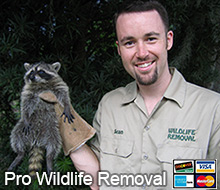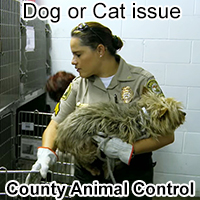- cambridge@aaanimalcontrol.com
Call 24/7 for a free quote:
740-263-2129
Cambridge Wildlife Control / Ohio Animal Removal
Wildlife & Environmental Solutions - Animal Pest Control in Cambridge, OH. Call us: 740-263-2129

- Noises in Your Attic?
- Unwanted Wildlife?
- Bird or Bat Problem?
- Rodent Infestation?
- We Can Solve It!
Please, no calls about DOG or CAT problems. Call animal services: (740) 439-1903.

 Wildlife & Environmental Solutions provides professional wildlife control for both residential & commercial customers in the
city of Cambridge in Ohio. We offer custom animal control solutions for almost any type of wildlife problem, whether
it be the noises of squirrels running through the attic, a colony of bats living in a building, animals digging in your yard, or
the destructive behavior of a raccoon or other critter, we have the experience and the tools to quickly and professionally
solve your problem. For a consultation and price quote, give us a call at 740-263-2129
Wildlife & Environmental Solutions provides professional wildlife control for both residential & commercial customers in the
city of Cambridge in Ohio. We offer custom animal control solutions for almost any type of wildlife problem, whether
it be the noises of squirrels running through the attic, a colony of bats living in a building, animals digging in your yard, or
the destructive behavior of a raccoon or other critter, we have the experience and the tools to quickly and professionally
solve your problem. For a consultation and price quote, give us a call at 740-263-2129
Click here to check our prices updated for year 2024. There are many Cambridge pest control companies for animals out there, but not all of them are licensed and insured professionals. Make sure that you hire a competent expert for your Cambridge exterminator of wildlife. At Wildlife & Environmental Solutions, we will be courteous and friendly and take the time to answer your questions. Give our Cambridge trappers at Wildlife & Environmental Solutions a call, and we will listen to your problem, and make an appointment to perform an inspection. Feel free to email us at cambridge@aaanimalcontrol.com
 Resources for free wildlife removal in Cambridge
Resources for free wildlife removal in Cambridge
If you can't afford our pro wildlife work, you can try these agencies for free wildlife removal:
Guernsey County Animal Services: (740) 439-1903
Ohio Wildlife Commission: 800-945-3543
Cambridge Police Department: Call your local police, they sometimes help.
These agencies will only help with certain types of wildlife problems, and they are not always consistent. If you want a high quality of
help done right, call our company.
 Ohio is full of wildlife, including snakes, squirrels, raccoons, skunks, opossums, and more. Wildlife removal is a complex field. I
recommend professional Cambridge wildlife control services if you want to solve a critter problem legally and correctly. For example, we specialize in animals in the attic, which have broken into the house
and almost always have a nest of baby animals. It is necessary to perform correct
preventative repairs to keep pest animals a out of your house for good. We perform full building inspection, do the
the repairs and we also offer attic decontamination if necessary. Rats and mice love to live in attics, and can chew wires or leave droppings. Some Cambridge animals
frequently enter homes, and correct removal is not a simple task.
Ohio is full of wildlife, including snakes, squirrels, raccoons, skunks, opossums, and more. Wildlife removal is a complex field. I
recommend professional Cambridge wildlife control services if you want to solve a critter problem legally and correctly. For example, we specialize in animals in the attic, which have broken into the house
and almost always have a nest of baby animals. It is necessary to perform correct
preventative repairs to keep pest animals a out of your house for good. We perform full building inspection, do the
the repairs and we also offer attic decontamination if necessary. Rats and mice love to live in attics, and can chew wires or leave droppings. Some Cambridge animals
frequently enter homes, and correct removal is not a simple task.
 DOG or CAT: If you need assistance with a domestic animal, such as a dog or a cat, you need to call your local
Guernsey County Animal Control
for assistance. They can help you out with issues such as stray dogs, stray cats, vaccinations, licenses,
pet adoption, lost pets, and more. If you have a wildlife problem, you can try calling the Guernsey County animal control, and see what they have to
say, but they will certainly not help you with a complex wildlife problem such as critters in your attic. They are a free government agency that
helps with dog and cat issues only.
DOG or CAT: If you need assistance with a domestic animal, such as a dog or a cat, you need to call your local
Guernsey County Animal Control
for assistance. They can help you out with issues such as stray dogs, stray cats, vaccinations, licenses,
pet adoption, lost pets, and more. If you have a wildlife problem, you can try calling the Guernsey County animal control, and see what they have to
say, but they will certainly not help you with a complex wildlife problem such as critters in your attic. They are a free government agency that
helps with dog and cat issues only.
Guernsey County Animal Services: (740) 439-1903
Cambridge Wildlife Tip:
Biology of Little Brown Bat: Appearance, biology, life cycle, habitat, diet, behavior
Appearance
The Little Brown Bat, as its name suggests, is a glossy brown in color with dark brown membranes. Its fur on the underside is paler, slightly greyish in color and its wings don't have a lot of ventral wing hair.
Biology
The body of the adult Little Brown Bat are approximately 6 to 10 centimeters, slightly longer for females. These creatures can weigh between 5 to 14 grams and its wings can span between 22 to 27 centimeters. They have five metapodials each on both their fore limbs and hind limbs, but they do not carry a sagittal crest on their skull like most mammals. The forehead of the Little Brown Bat has an upslope profile and it has a short rostrum, a short tibia and no keel on the calcar. It has very sharp teeth, 38 including molars, allowing them to grasp insects while in-flight.
Life Cycle
Gestation of the female bats last from 50 to 60 days, producing one baby per year, or sometimes twins. Baby bats are born with their eyes closed, opening them by the second day. They feed off their mother's nipple for two weeks and by three weeks after birth, they learn to fly. At four weeks old, they are the size of adult bats. By 7 to 9 months after birth, the females sexually mature. The Little Brown Bat usually lives for 6 to 7 years on average but are often known to live for up to 12 years, if not killed by a predator, die from an accident or contract white nose syndrome.
Habitat
These creatures live in colonies of up to 1,000, usually in caves or in forested areas. Female bats however, tend give birth in attics or areas with high humidity and where there is a body of water. The Little Brown Bat has up to three different roosting areas, one for the day, for the night and then for hibernation. They can live in buildings and tree hollows, huddling together in more constrained areas at night, to keep warm. While they are known to hibernate in caves and abandoned mines, once the temperature gets warmer, they often venture out to hunt for insects.
Diet
The diet of the Little Brown Bat is made up of insects. They feed on beetles, gnats, mayflies, midges, moths and mosquitoes, to name a few. They prefer to eat insects that are in their aquatic life stage, such as mosquito larvae, hence sometimes roosting near large bodies of water. The Little Brown Bat also hunts insects that are packed together and in close range, using echolocate to find prey. The prey in the water is captured using its mouth while other prey is scooped up using its wings, while the bat is in flight.
Behavior
They feed during the evening, resting at night thus dropping feces unto their night roosts as opposed to the day roosts which is more prone to attracting predators. If they do not catch anything to eat during the evening, they enter into a torpor, similar to hibernation, until the night when they resume hunting.
Cambridge, OH Animal Control News Clip:
No current news article at this time.
We are Cambridge wildlife management experts, and are familiar with all the pest animals, including all species of Ohio snakes and
bats. We at Wildlife & Environmental Solutions are the best among Cambridge nuisance wildlife companies and can solve all animal damage issues. Our wildlife operators are skilled at bird control and
bat removal, and would be happy to serve your Cambridge bat control or pigeon and bird control needs with a professional solution. Opossums, skunks, moles, and other animals
that can damage your lawn - we are the exterminators who can capture and remove them. Our specialty is removal of animals in homes such as raccoons in the attic or squirrels in the attic.
Our professional pest management of wildlife and animals can solve all of your Cambridge
critter capture and control needs. Give us a call at 740-263-2129 for a price quote and more information.
If you have any questions about a wildlife problem in Cambridge, or wildlife removal in Guernsey County, please give Wildlife & Environmental Solutions a call at 740-263-2129, and we will listen to your problem, give you a price quote, and
schedule an appointment, usually same day or next day, to solve the problem.


















